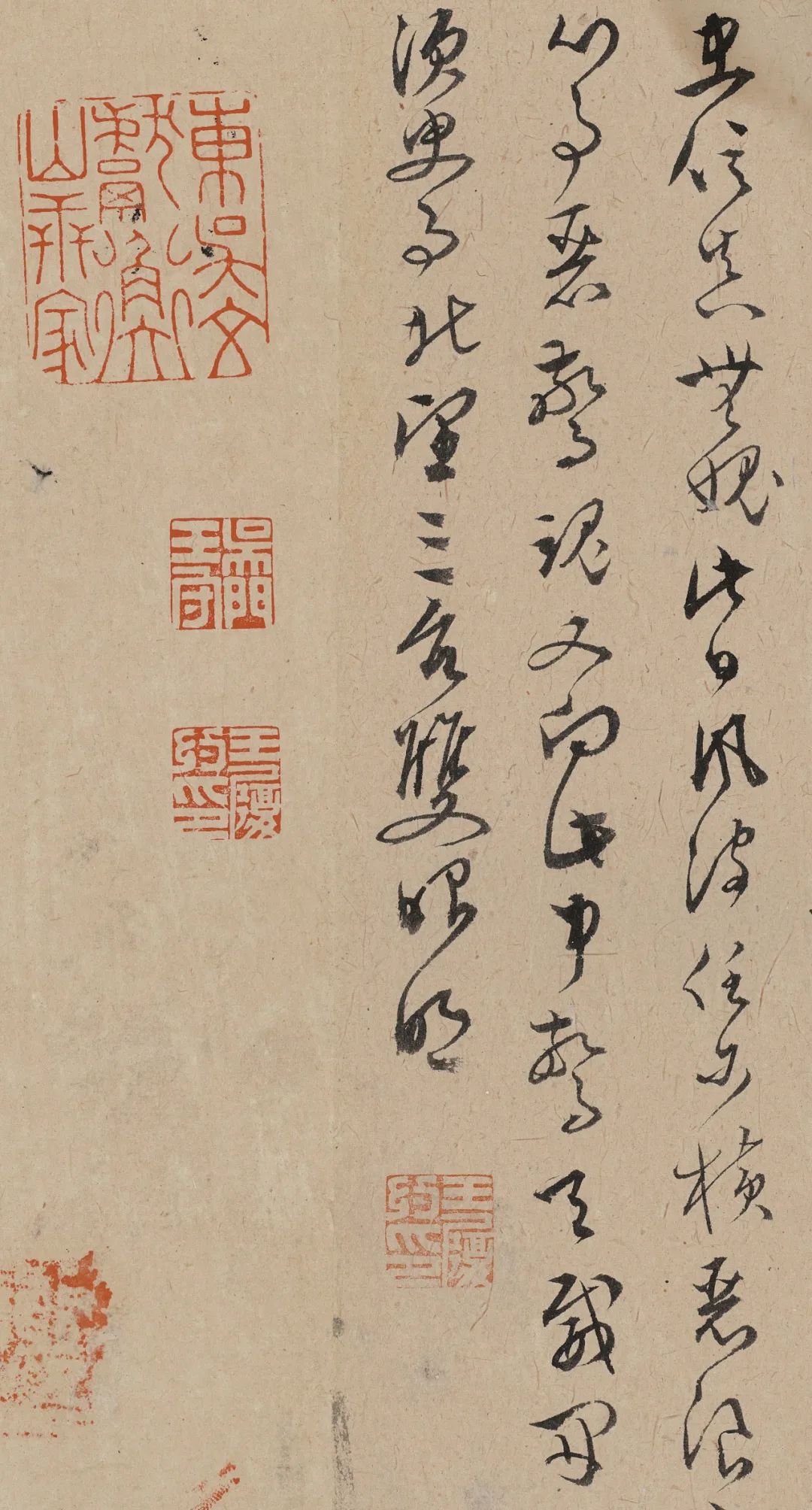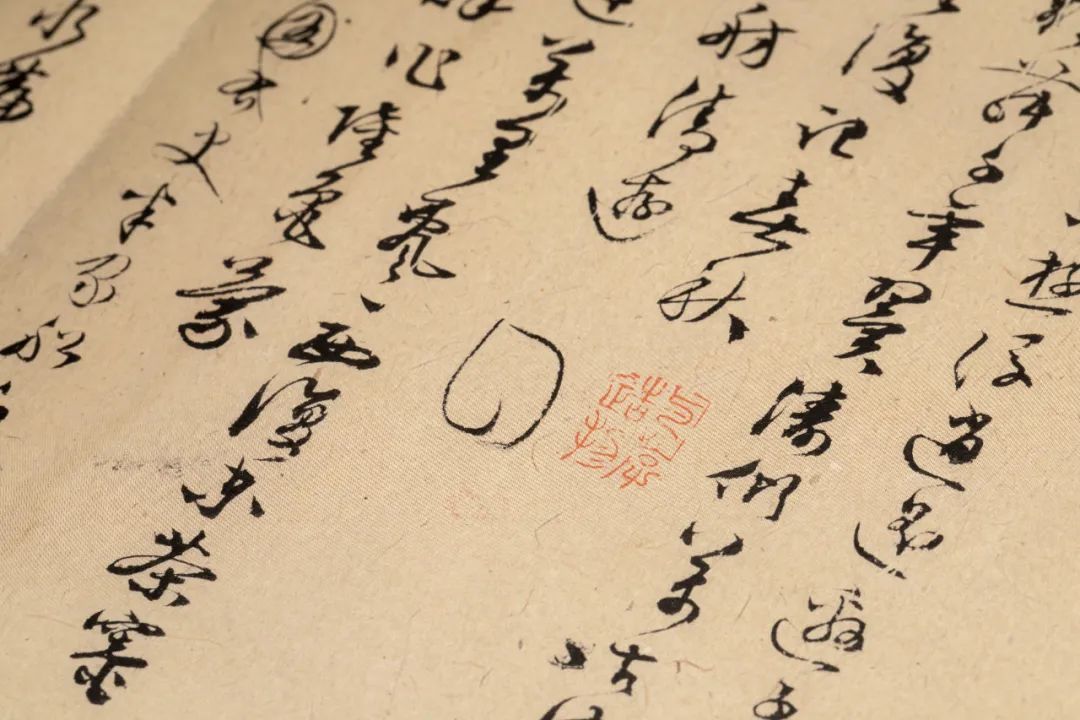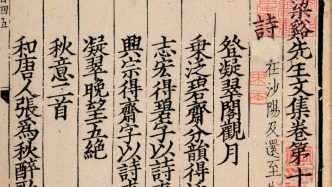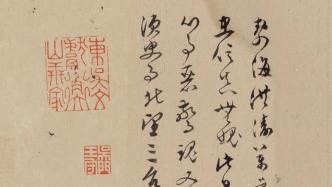
The Shanghai Library has a collection of rare manuscripts by literati from past dynasties, including the poetry manuscripts of Wen Peng (alias Shoucheng, alias Sanqiao) of the Ming Dynasty, who played an important role in the history of literati seal cutting.
Following "Shuo Jian" and "Zhao Zhiqian's Sketches", etc., Zhiguan Bookstore and the Historical Documentation Center of Shanghai Library recently joined forces and jointly planned and published "Ink Works of Famous Masters in Shanghai Book Collection - Wen Sanqiao's Poetry Manuscripts" with Zhejiang University Press. This poem manuscript is published publicly for the first time and is a photocopy of the original appearance, original color, and original size. There are a total of fifteen seals used by different literati. Among them, there are as many as three seal seals, so the seals appear a total of twenty-six times. Among them, there are twelve red seals and three white seals. It contains about 120 poems by Wen Peng. There are a total of 51 characters involved in the poems, and 29 can be examined. Huang Dun, a professor at Nanjing University of the Arts who is dedicated to studying this manuscript, believes that the publication of this manuscript may reveal to the world the mystery of the authenticity of the seals of the originator of literati seal carving.
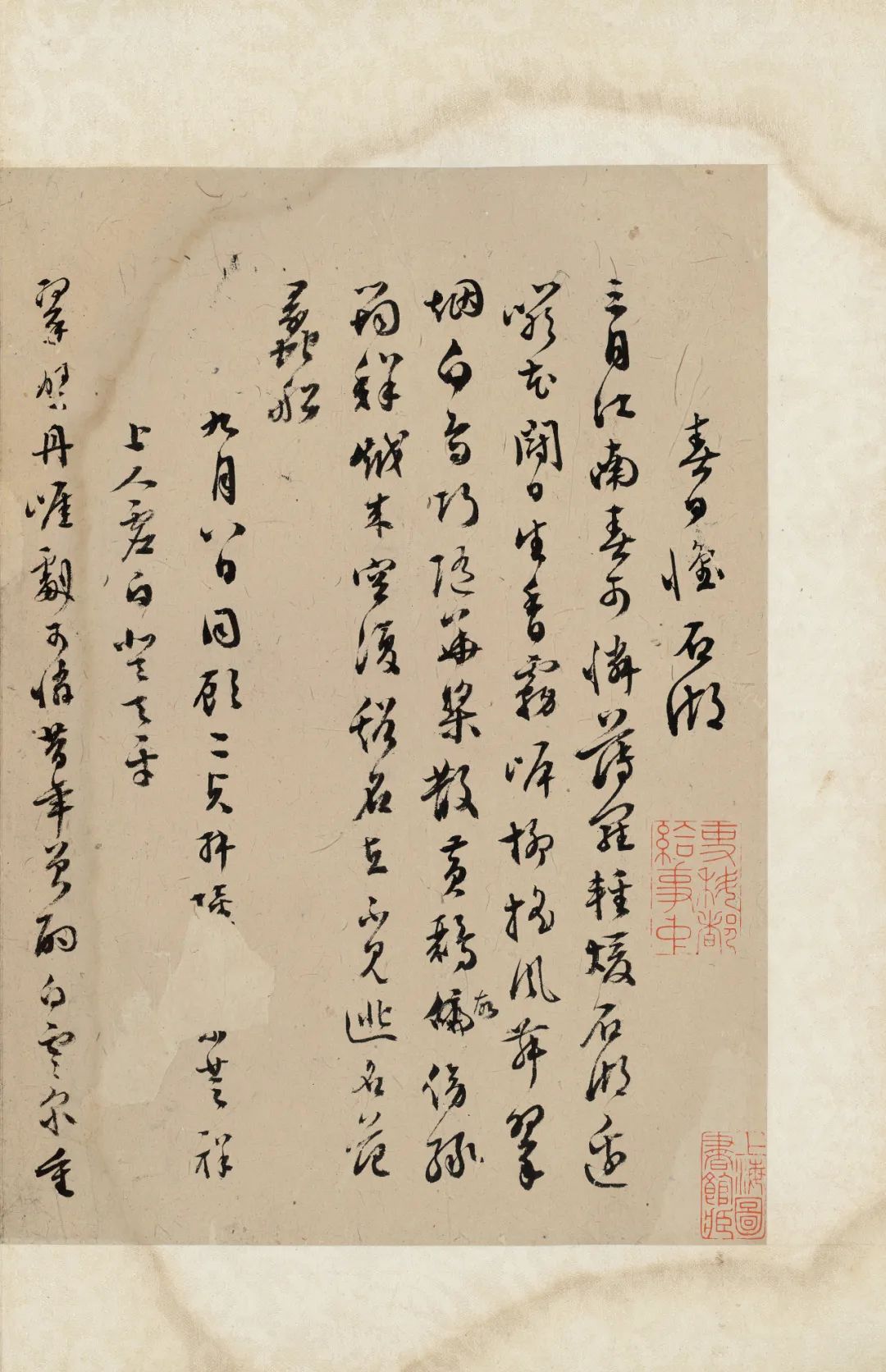
Part of "Wen Sanqiao Poetry Manuscript"

Shanghai Library collects famous calligraphy "Wen Sanqiao Poetry Manuscript"
This volume is the work of three generations of scholars who have studied the Wu School of Calligraphy, including Professor Huang Dun of the Nanjing University of the Arts, Professor Xue Longchun of the School of Art and Archeology of Zhejiang University, and Cai Chunxu of the School of Art of Suzhou University.
"Poetry Manuscript" collects poems, books and seals in one book; the poems are fresh and elegant; the calligraphy and ink are excellent, and the seals and seals are profound, which is the regular standard of literati; it is an important work that studies the poetry creation, calligraphy and seal cutting art of Wumen literati in the Ming Dynasty literature. In the Ming Dynasty, the Wen family of Wumen was known as a literary family. Although Wen Zhengming failed in repeated attempts, he was recommended to the Imperial Academy in the second year of Jiajing (1523). Wen Zhengming's two sons, Wen Peng and Wen Jia, followed in his footsteps. In his later years, he entered the official career through tribute examination. There are many collections of poems and essays by Wen family members. Wenhong's "Wen Laishui Poems in One Volume and One Volume of Posthumous Essays", Wenlin's "Wen Wenzhou Collection in Twelve Volumes", and Wensen's "Wen Zhongcheng's Poems in One Volume" can still be seen today. , Wen Zhengming's "Appendix Volume One to the Thirty-Five Volumes of Futian Collection", Wen Peng's "Collection of Dr. Wen's Poems Volume Two", Wen Jia's "Wenhezhou Poems Volume One", etc. Since Wen Zhengming and his son were both good at calligraphy, their poetry manuscripts are highly prized and there are many in public and private collections today. Although most of these manuscripts are fragments, their texts and calligraphy are quite valuable. Wang Shizhen (1526-1590) once heard from Wu people that Wen Zhengming wrote a volume of old poems every New Year. This habit continued until his later years. After his death, the poem manuscripts were scattered among various scholars, and were later The people of Huizhou bought twenty volumes for forty thousand.
Zhou Tianqiu, a disciple of Wen Zhengming, also said that he saw several manuscripts of his poems being torn into pieces and sold as leaves. Since future generations cannot preserve it forever, many of the manuscripts written by Wen family members have been lost and need to be sorted out in detail.
This volume of Wen Peng's "Wen Sanqiao Poetry Manuscript" collected by the Shanghai Library is one of the remaining pearls.
Wen Peng (1497-1573), courtesy name Shoucheng and alias Sanqiao, was born in Suzhou. The eldest son of Wen Zhengming (1470-1559). He is good at poetry and calligraphy, and has a fine appreciation of poetry, especially seal cutting, which leads the fashion of the times. He is a representative writer who revived the seal cutting art among literati during the Jiajing period of the mid-Ming Dynasty. Although Wen Peng occupies an important position in the history of literati seal cutting, no seal has been passed down to the world, and there are many fake things behind his death. According to an article written by Huang Dun, the Shanghai Library has the "Manuscript of Wen Sanqiao Poems". The poems, books, and seals in the volume are integrated, which can fill the gaps in historical materials. It is an important new material for the study of Wen Peng. "Among them, The fifteen seals on the book have aroused my great interest, and I now boldly speculate that the author of these seals belongs to Wenpeng."

"Portrait of Wen Peng" by Li Yueyun, Qing Dynasty, collected by Nanjing Museum
"Wen Sanqiao Poetry Draft" has a total of thirty-five pages and contains about 120 poems by Wen Peng. The poems involve a total of fifty-one characters, of which twenty-nine can be examined. The blue silk envelope is inlaid with a piece of white silk, which has the words "Authentic Wen San Bridge" in Chen Jing's official script, as well as one page of inscriptions and postscripts by Zhao Wenlin and Chen Zongyuan in the late Qing Dynasty.

"The Authentic Relic of Wen San Bridge" by Chen Jing

Inscription and postscript by Zhao Wenlin

Inscription and postscript by Chen Zongyuan
According to researchers, many of the "Wen Sanqiao Poetry Draft" are poems written by Wen Peng in his early years, and most of them contain content such as birthday wishes and farewells. Only fourteen of them are found in the engraving of "Dr. Wen's Poetry Collection", and half of the poems in the collection are The poetry manuscripts written by Wen Peng since he took the exam in Beijing in his later years and became an official abroad are undoubtedly valuable supplements. This poem manuscript should have been written after Wen Peng was sixty years old, and he was sorting out the remaining manuscripts left behind by his poetry creation in his later years. However, it may not be the final draft, so there is no certain order.
Wen Peng was proficient in calligraphy in various styles. His friend Lu Shidao wrote in his collection of Zhao Mengjian's "Molan Tujuan" (collected by the Palace Museum): "The calligraphy of father and son is the best of his generation." This shows that people at the time highly valued him. Among all Chinese styles, Peng is best at cursive and official script. The former was mostly influenced by Zhu Yunming, while the latter was influenced by his family studies.

Part of "Wen Sanqiao Poetry Manuscript"

Mingwen Peng inscribed Qiu Ying's "Pictures of Cooking Tea", old collection of Fang Junbi
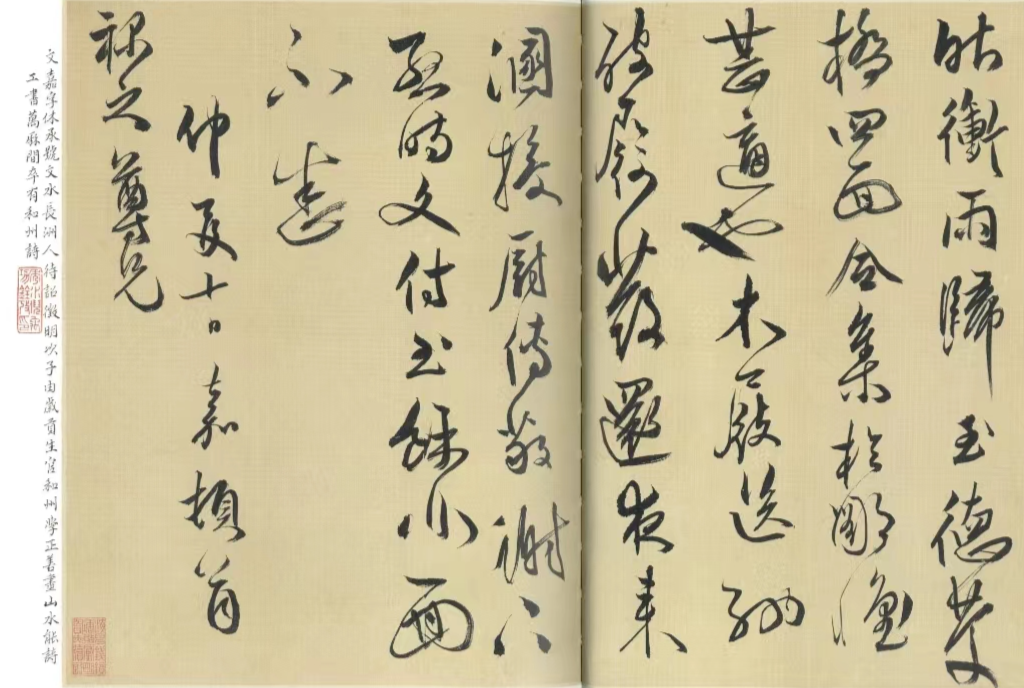
Ming Wenjia's "Letter to Wang Guxiang" from the poem manuscript, collected by the Shanghai Museum

Ming Zhu Yunming's "Poetry in Running Script" Collection of Xubaizhai, Hong Kong Museum of Art
Wen Peng's calligraphy methods are quite broad. Everyone has dabbled in them from Qin Zhuan and Han Li to Song and Yuan Dynasties. The scope is broader than Zhu Yunming's. However, the calligraphy he studied most deeply is the calligraphy of Sun Guoting and Huai Su of Tang Dynasty, which corresponds to the two styles of cursive script. Species: small grass and large grass. He obviously did not forget his teacher's teaching: "Travel along the Jin Dynasty and the Tang Dynasty, guard and don't lose."
Sun Guoting's "Shupu" was divided into two volumes during its circulation. The second volume was collected by Wen Peng, and Wen Peng had the advantage of learning it. Sun Guoting obtained the true biography of the calligraphy of the two kings, and the "Book Book" is ink, which has been considered an important template for learning calligraphy since the Song Dynasty. Wu Shuo's postscript to the "Book Book" of the Southern Song Dynasty says: "From the Jin to the Tang Dynasty, as of today, The right army marched without heir, and the scale of the ancestral report depends on the court. If you evaluate the law book, you should take King Zhong as the first ancestor; if you want to learn the king's method, you should use the court as a guide." Wen Peng deeply agreed with this and copied it. It was given to Qin Zhu (1536-1585) who loved to study books.
Wen Peng's calligraphy in his youth has already shown the influence of "Shupu", such as the postscript of 1526 in Wang Chong's "Ringshu Shijuan" collected in the Shanghai Museum. Since then, his medium-sized running scripts have continued this path. , is its true nature. When he was forty years old, his cursive writing already showed his personal temperament. In mid-summer 1536, he wrote the postscript for Chen Chun's "Imitation Mifu Landscape Scroll". His writing was brisk, the fonts were full, and his temperament was gentle. Some of the fonts can be found in "Shu Pu" Provenance. Moreover, the beautiful stippling and clumsy fonts are also similar to Zhao Mengfu. Both Zhu Yunming and Wen Zhengming studied Zhao characters. It is not surprising that Wen Peng has such a foundation.

Mingwen Peng's "Seven Ancient Poetry Scrolls in Cursive Script" collected by Shanghai Museum
"Seven Ancient Poetry Scrolls in Cursive Script" (Picture 5), written in 1548, is a quite mature work, with superb technique and elegant style. In his later years, his calligraphy skills became more and more proficient, his style did not change much, and he maintained good writing condition. In the spring of Xinwei during the Long Qing Dynasty (1571), Wen Peng completed a miscellaneous booklet (Figure 6). The content is a copy of a poem by Lan Ting of Jin Dynasty. There are many paragraphs in cursive script, which interpret various styles of predecessors and reveal their ambition in calligraphy creation. The recorded poems by Wang Huizhi, Huan Wei, and Xie An all have the influence of Sun Guoting, but Wen Peng's personal rhythm and characteristics are also quite obvious, emphasizing the contrast of dot painting and the connection between characters, while Sun Guoting The contrast between the thickness and thickness of the cursive stippling is not so strong, and most of the words are independent.
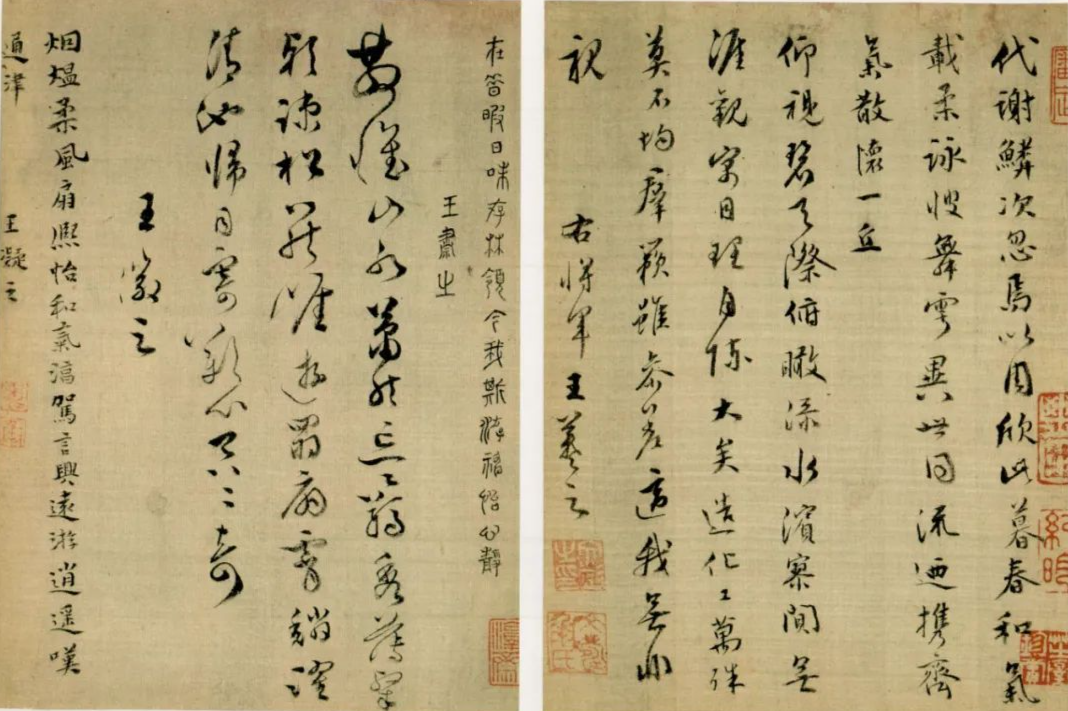
Mingwen Peng's "Book of Poems of Jin People" (detail) collected by Rongbaozhai, Beijing
"Wen Sanqiao Poetry Manuscript" was written by Wen Peng in his later years and contains two manuscripts of different natures. The previous copy of the manuscript was written relatively steadily. Due to the small size of the characters, the strokes were made calmly. The ups and downs and turns of the stipples were very precise, and there was no slack. The writing method of the latter part of the draft is the same as that of the previous part. In some places, due to overwriting, additions and corrections, the size of the handwriting is mixed, and sometimes there is some leftover ink, the ink is light, so it looks rough. What is special is that the song "Looking at the End of the World" is written in imitation of Huang Tingjian's calligraphy. It is probably written on a whim.
In "Wen Sanqiao Poetry Draft", we can see the process of writing and organizing poems by the ancients, especially those poems with undetermined titles and unfinished content, which deserve the attention of researchers. Zhang Fengyi's preface to "Dr. Wen's Poetry Collection" says: "(Wen Peng) Gu is not accustomed to reciting hard words, and does not change many drafts. He may answer the customer immediately, or take a walk to lead the success, and he can express himself as he pleases. Those who do good things will cherish the pieces and fight for them. Go, there are only two or three ears out of ten left."
Regarding the seals used in "Wen Sanqiao Poetry Manuscript", Huang Dun believes that the colors of the prints and ink pads are roughly the same. Judging from the content of the seals, there are name seals, nickname seals, Zhaihao seals, official identity seals, leisure seals, appraisal seals, etc., which should belong to multiple literati. There are a total of fifteen different seals, among which there are as many as three inscriptions, so the imprints appear a total of twenty-six times. The sealing method of imprinting is disordered and scattered. It is not only found in the blank spaces of each page of the poem manuscript, but many also appear in the middle of the poem manuscript. There may be one, two, or several sides. Sometimes the same side appears twice or three times but not necessarily on the same page. This obviously does not conform to the convention of seals on ancient calligraphy and painting works. Since the colors of these imprints are generally the same, they were not made by collectors from past dynasties; the styles of the seals are uniform, so they were not made by different sealers from past dynasties. This is because if it is made by collectors from past generations, the color of the ink pads cannot be roughly consistent; if it is made by ink collectors from different eras, the printing style cannot be unified. Therefore, the seal on "Wen Sanqiao Poetry Manuscript" has nothing in common with the above-mentioned seal methods of calligraphers, painters, and collectors, and the motives for sealing are completely different.
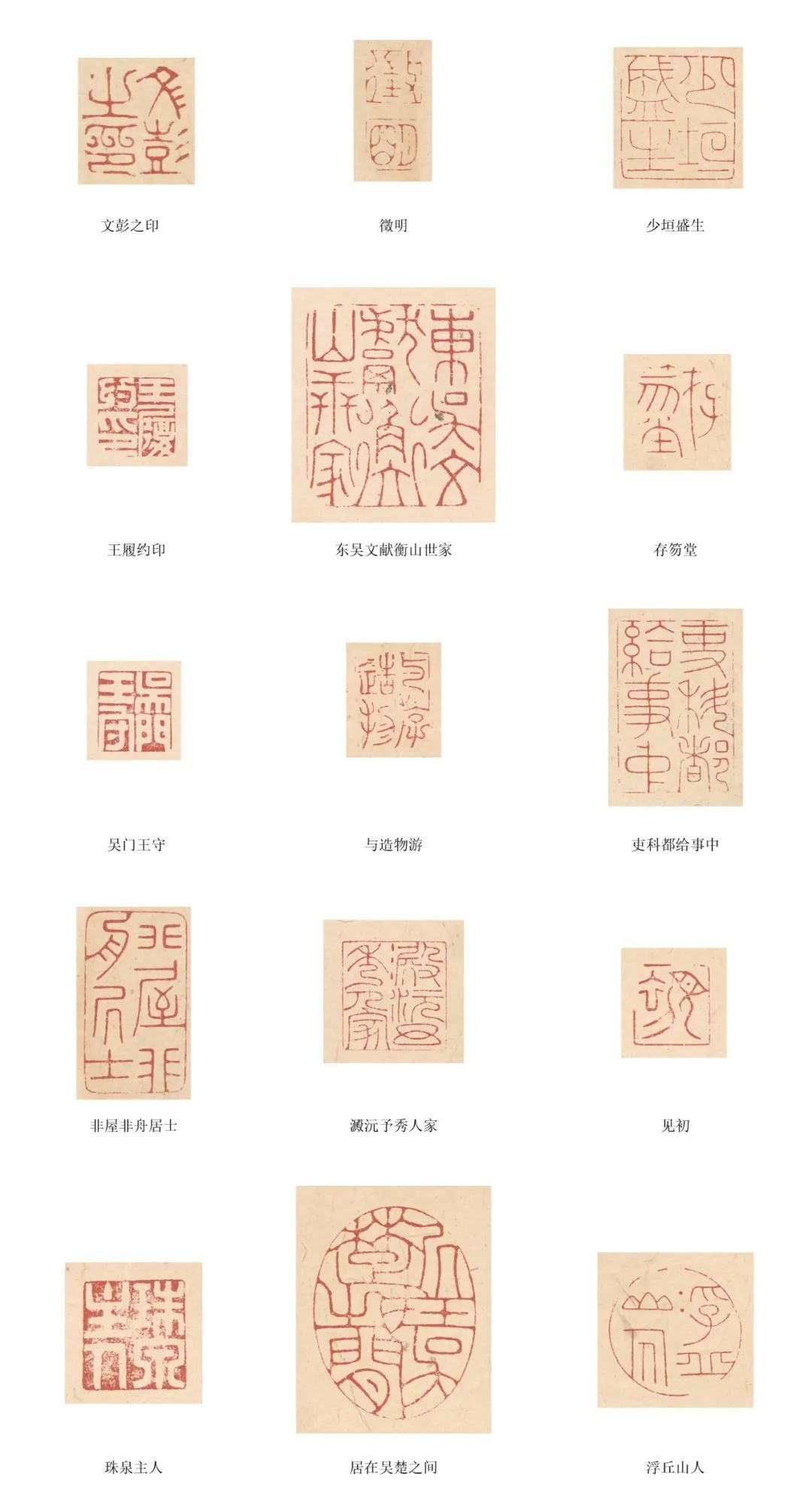
Wen Peng's fifteen-square imprint on "Wen Sanqiao's Poetry Manuscript" collected by the Shanghai Library

Wen Peng's Seal
Among the fifteen seals, there is both Wen Peng's own name seal "Wen Peng's Seal" and his father Wen Zhengming's consecutive seal "Zheng Ming" (recorded in "Seals of Chinese Calligraphers and Painters" compiled by the Shanghai Museum (Beijing: Cultural Relics Publishing House, 1982).) and the collection seal "The Hengshan Family of Soochow Literature", as well as the two name seals of Wang Shou, who had a deep friendship with Wen Peng in his youth, "Wumen Wang Shou" and "Wang Lu Yue Seal", ( The second seal is recorded in the "Seal Appraisal of Chinese Calligraphers and Painters" compiled by the Shanghai Museum.) and the official identity seal used by Wang Shousu "Li Ke Du Gie Shi Zhong".
"From another perspective, only if these seals have passed through the hands of the writer - Wen Peng, can they be stamped on his poem manuscript. Therefore, the purpose of the seal can only be inferred as "test printing" and "retaining the manuscript" .” The researcher believes that,
The so-called "test seal" means that in the process of creating a seal, the seal engraver will dip the carved seal in ink mud and try to stamp it on the paper to check the details. If he is satisfied, he will not stamp it again. If there are any details that need to be adjusted, the seal will be stamped. After trimming with a knife, try printing again. The so-called "seal manuscript" means that the seal carver knocks down the completed seal work and keeps it for reference in the future when creating similar seals. In both cases, the seal cutting author will make many seal cuttings.
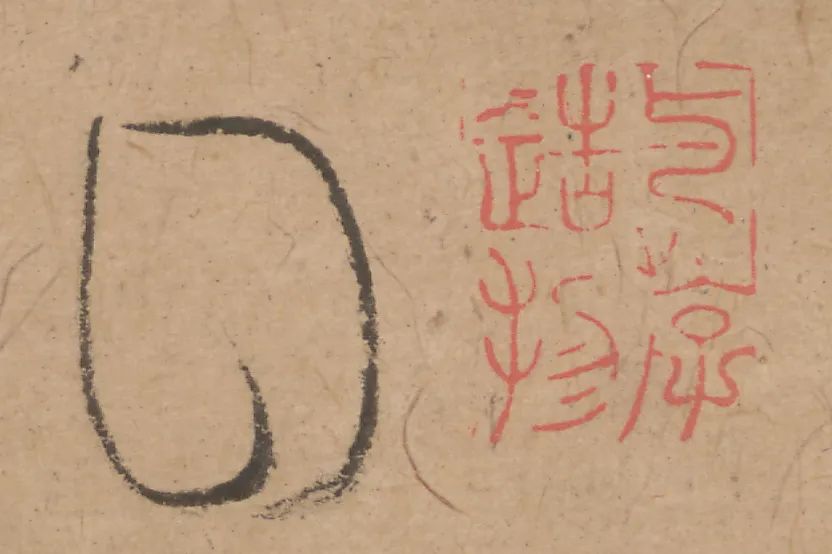
Traveling with Creation
Let’s look at the details of the test print first. Take "Wandering with Creation" as an example. After sealing, the sealer noticed the relationship between the seal border and the seal text, so he conveniently drew a border next to the seal. We speculate that there may be two situations: one is that due to the uneven printing surface, all clear borders cannot be printed; the other is that the author may have considered not having a complete border when initially designing, which is reflected in the lack of strokes in the word "AND". There is a right-angled border in the upper right corner. Since I continued to think about whether to keep the border after sealing, I used two strokes to outline the border next to the seal. It can be said that the border drawn by the brush reflects the author's thinking during the sealing process. What is important is that the ink border and the imprint must have been made by one person, and this person can only be Wen Peng, the author of the ink on the poem manuscript.
(Note: The information for this article was provided by Zhiguan Bookstore, and was adjusted and compiled based on relevant articles by Huang Dun, Cai Chunxu, and Xue Longchun)
Some pictures of "Wen Sanqiao Poetry Manuscript"


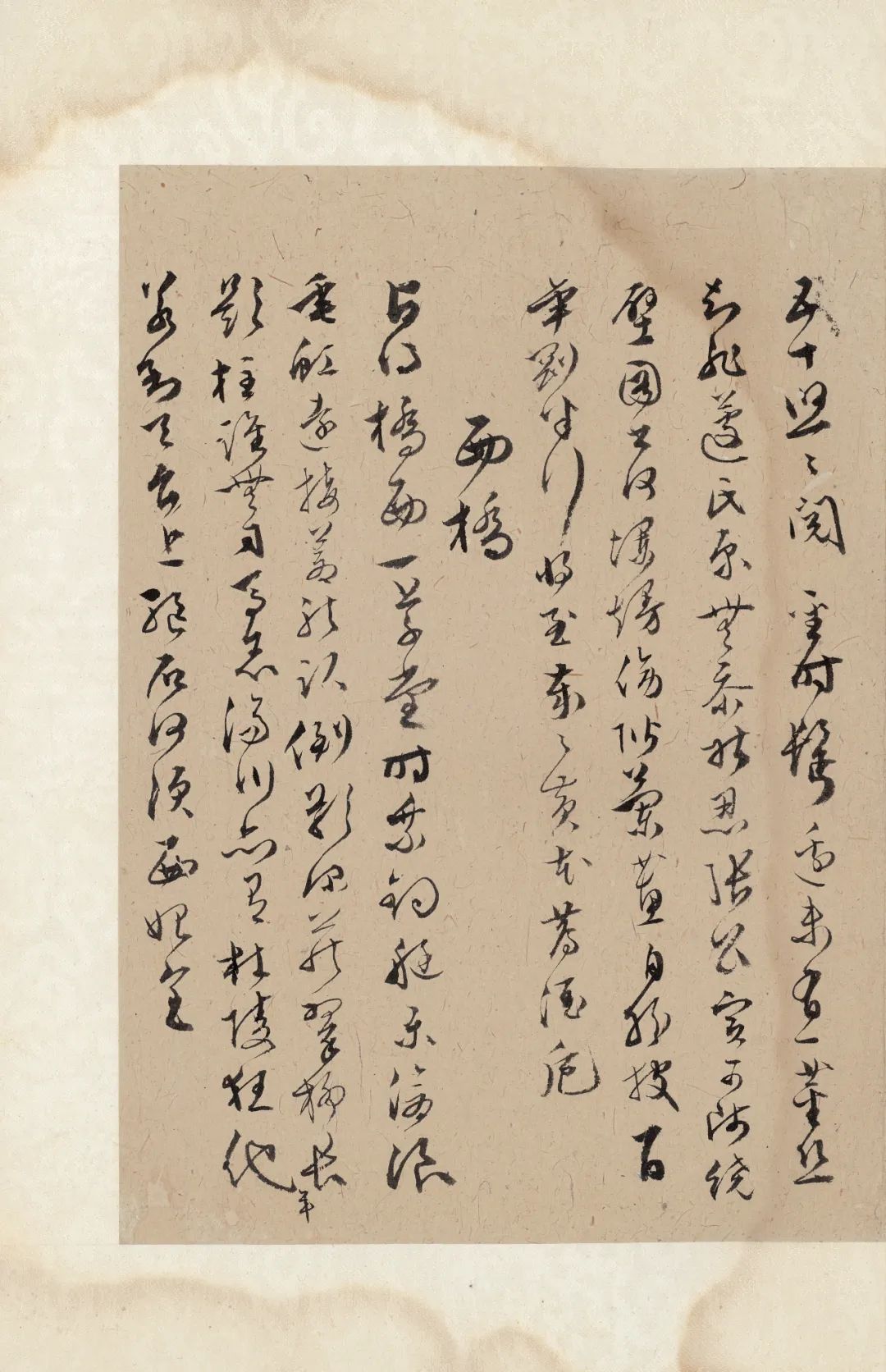

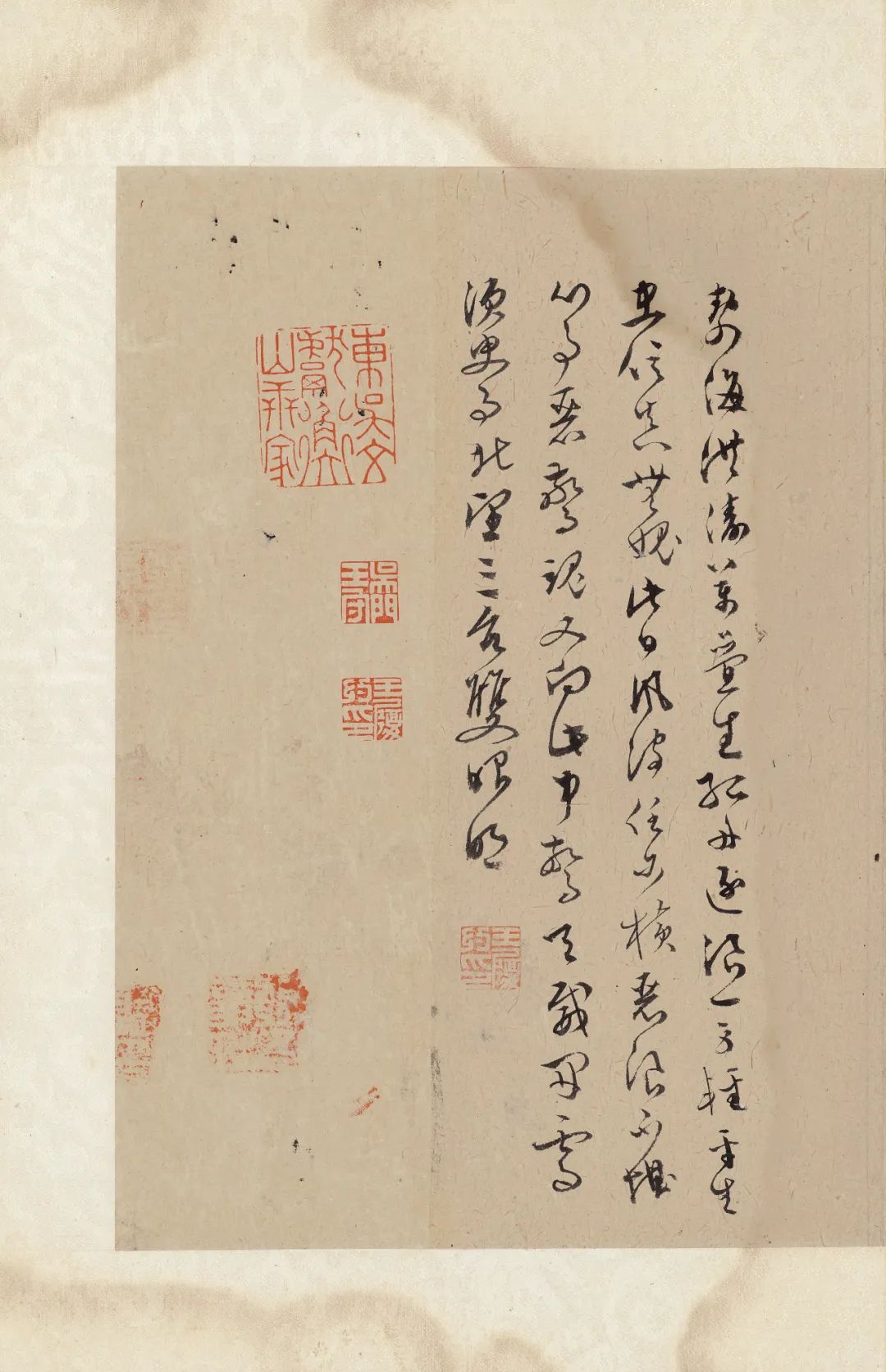

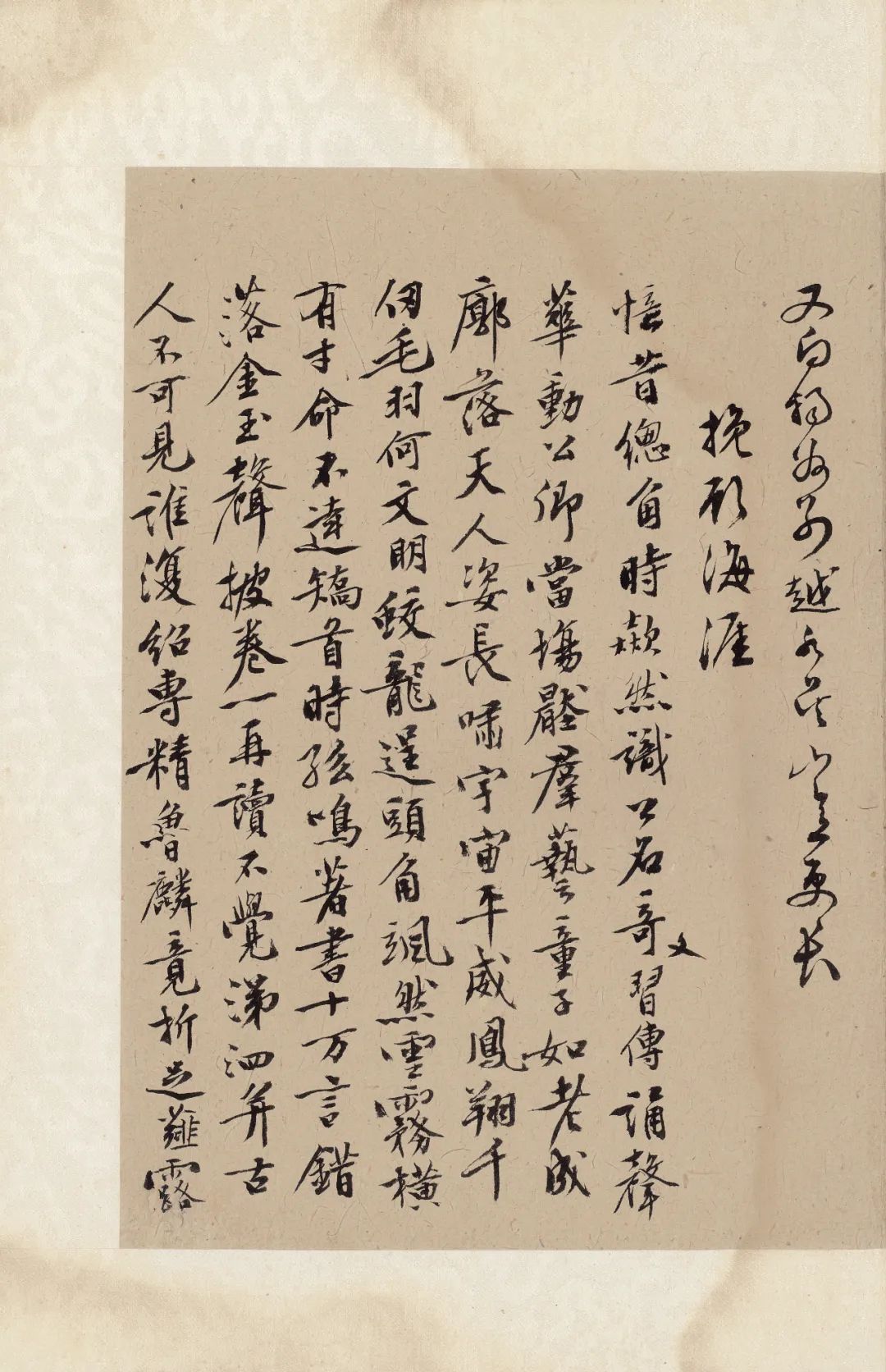


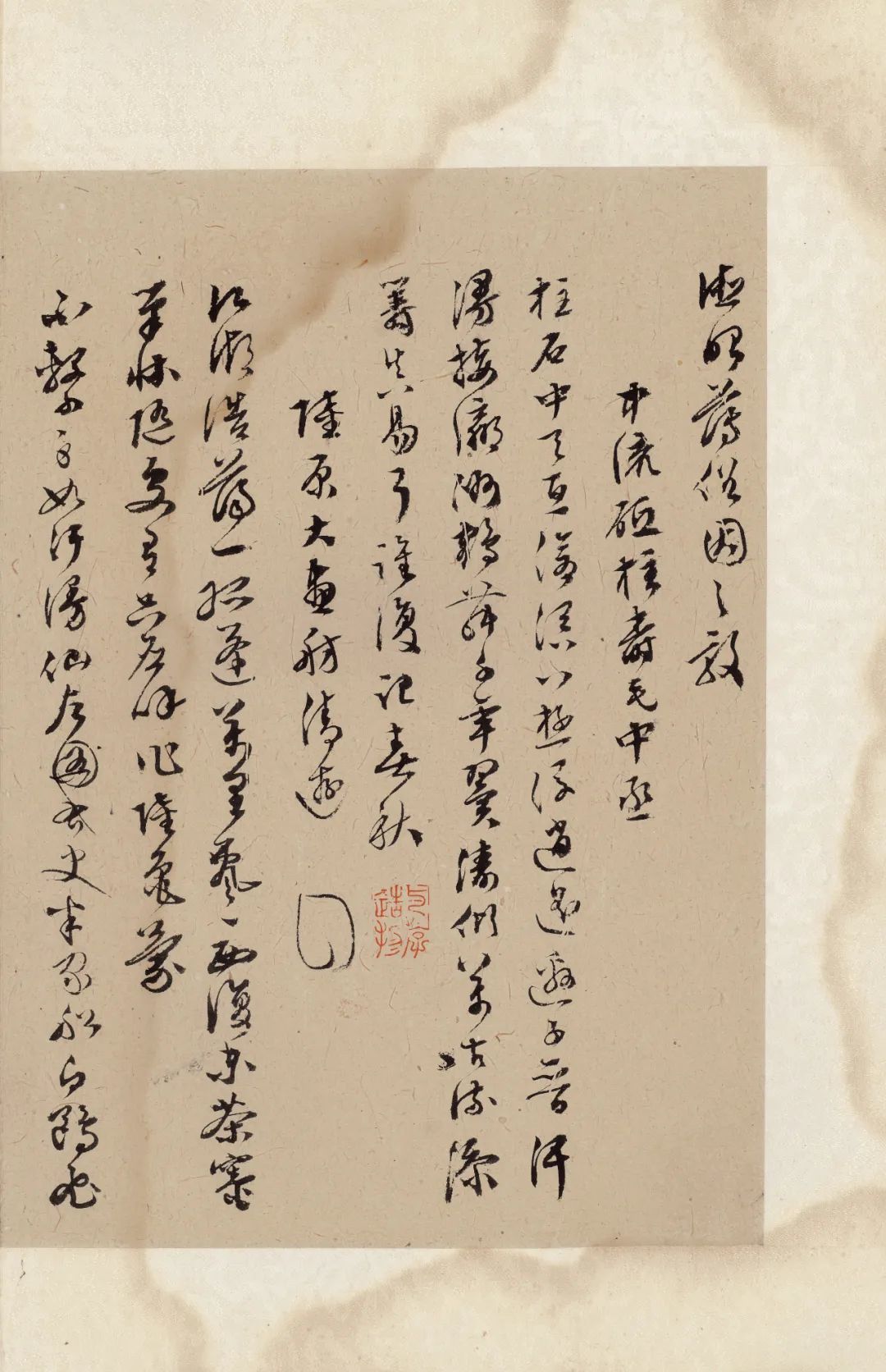

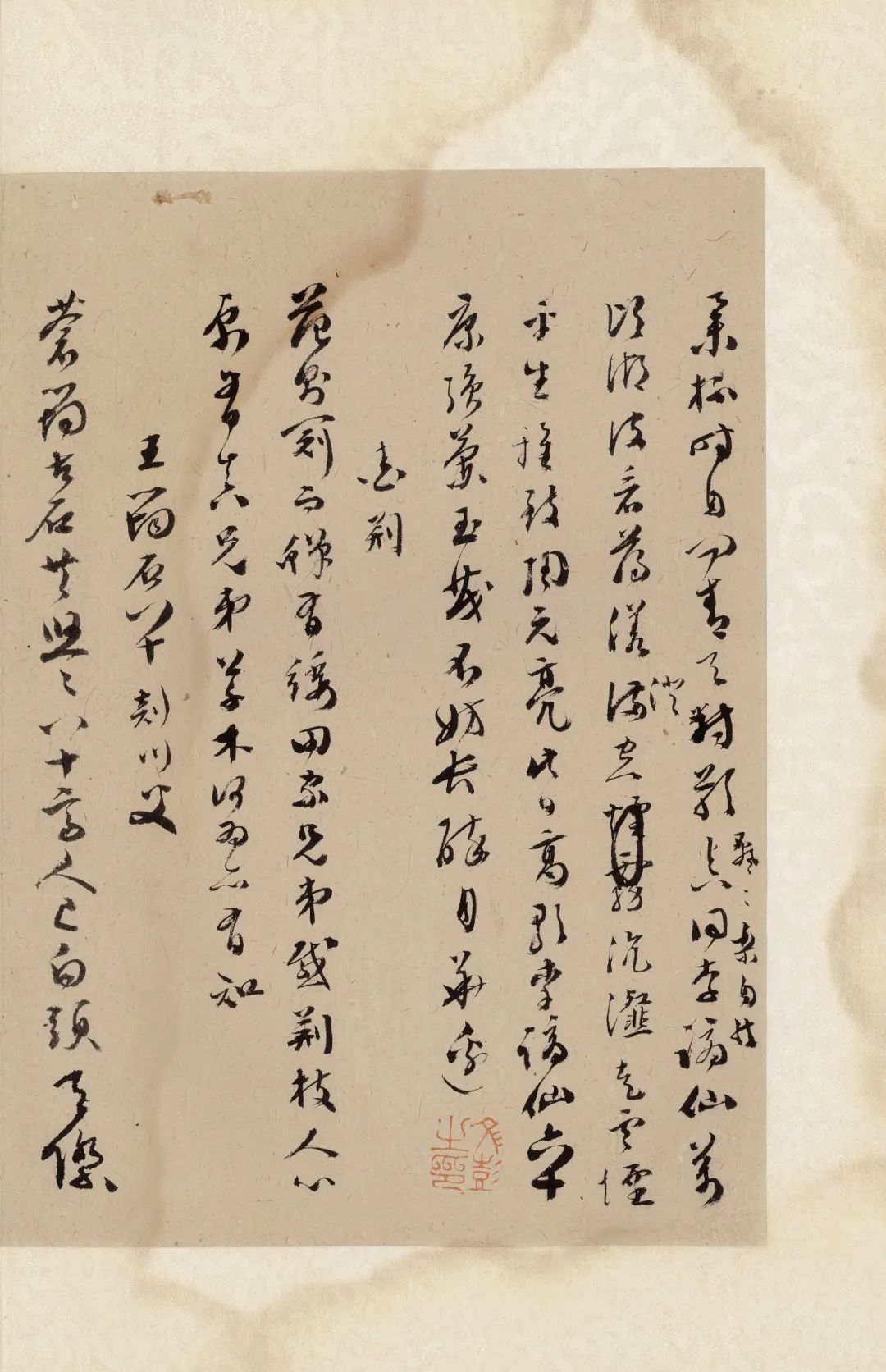


Enlarged view of some works
